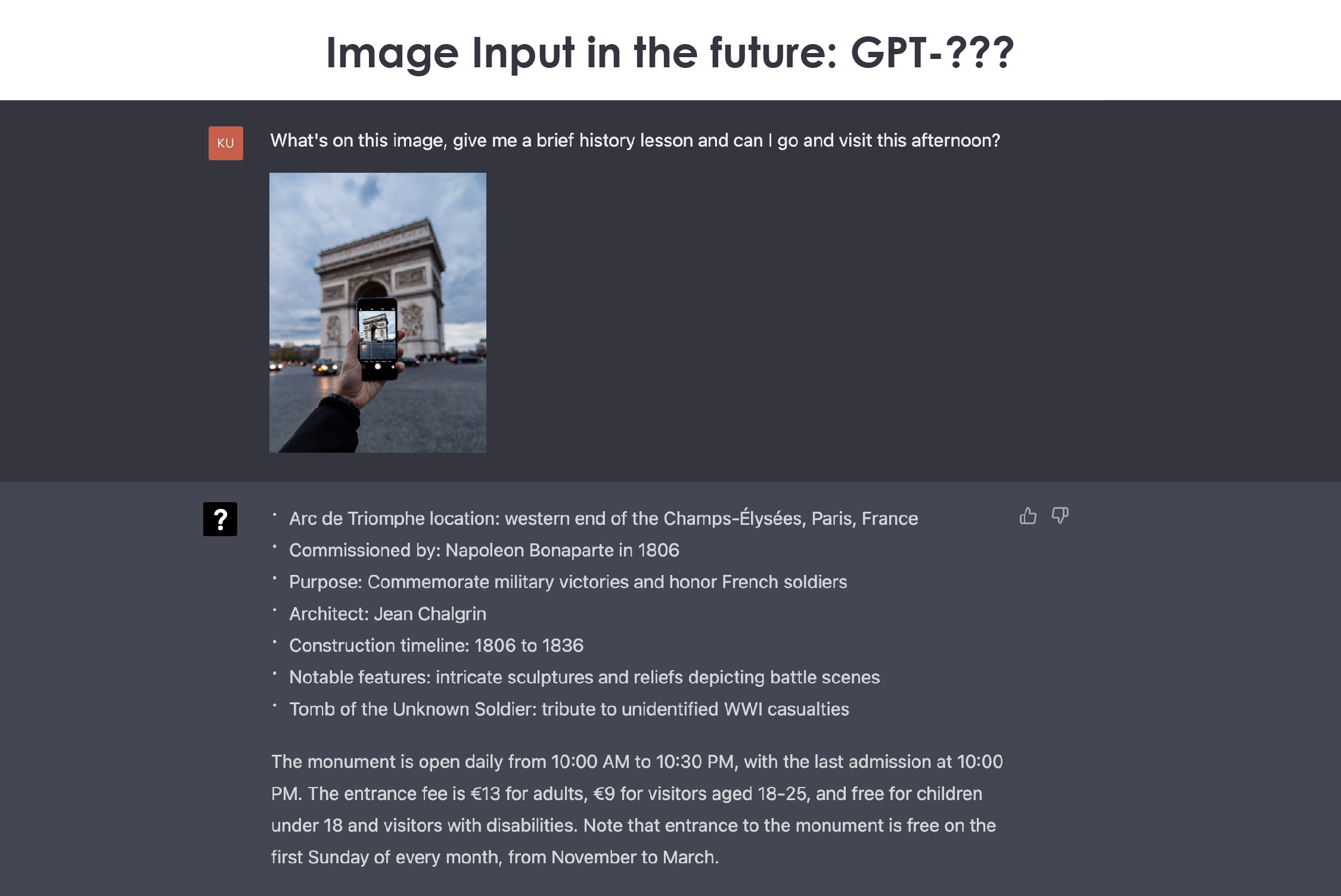

It’s time to talk about GPT-4. You might have heard that this spanking new language model by OpenAI, outperformed most humans on the bar exam, scoring in the top 10%. Incredible. But, how does it change the game?
Well, for starters, GPT-4 is a multimodal language model that can now process image input, making it the first of its kind to do so; this model also demonstrates better reasoning skills and creativity. While the image input feature isn’t released in the public beta yet, users can test out the text generation skills of the GPT-4 model in the paid ChatGPT Plus version.
Along with the release of GPT-4, OpenAI has also rolled out ChatGPT plugins – which are sorts of building-blocks that enable ChatGPT to reference real-time information, interpret code, input a unique dataset and much more.
And, how much better is GPT-4 in travel-related scenarios compared to the previous model? Will travel agents, planners, concierges, and front desk staff be replaced by large language models and what is it that GPT-4 brings to the table?
GPT-4 is the latest version of the transformer-style GPT series by OpenAI, trained on publicly available internet data and data licensed from third-party providers.
Though GPT-4 sources information only until 2021, this impressive model is breaking barriers with its ability to produce articulate and concise answers, construct responses to complex tasks, and introduce image input.
GPT-4 was put to the test by taking human-designed exams, such as the bar exam and SAT. Without having any specific training for these tests, it ended up scoring better than 90% of the general public.
Compared to its previous version, GPT-4 shows more articulate, concise answers, performs better at answering prompts that require more creativity or critical thinking, and is less likely to string together false information.
“It (GPT-4) has broken through the precision barrier…It includes more facts, and they are very often right.” said an AI expert Mr. Nicholson in an article in the New York Times after testing this model.
GPT-4 is also extending a maximum input limit to 32,000 tokens, or 25,000 words. This is a major increase from GPT-3.5’s 4,000 tokens, which is 3,125 words.
This language model is the first to introduce image input, although, at the moment, this feature is only available in the Limited Alpha version for selected users. We can expect the future versions of GPT language models to extend multi-modal functionality to other formats, such as video.

The parameter count determines the model’s size and complexity of language models – the more parameters a model has, the more data it can handle, learn from, and generate.
GPT-3.5, used to be the largest language model ever built with 175 billion parameters. When it comes to details, GPT-4 is shrouded in mystery. Unlike previous models, OpenAI is not giving away much information about the data, computing power, or training techniques used to build their latest model.
Some are estimating that the GPT-4 is 6x larger than GPT-3.5, which would make up for an incredible 1 trillion parameters.

Along with the GPT-4 model launch, OpenAI unveiled a new feature, with probably the most business potential, ChatGPT plugins. With plugins, the users will be able to extend the current capabilities of ChatGPT, like accessing up-to-date information or training the model using their own data. Plugins will slowly come to life in the coming months. Currently, this feature is only available to selected users in the Limited Alpha version.
Open AI is now developing in-house built plugins for web browsing (finally connecting ChatGPT to the internet), interpreting code, training ChatGPT with a unique dataset (retrieval), and 3rd party plugins (the first batch launched by Expedia, OpenTable, Kayak, and others).
We took GPT-3.5 and GPT-4 models for spin in a few travel-related scenarios and did a side-by-side comparison of their strengths, weaknesses, and performance. So, in what ways does GPT-4 outperform the previous model?
First, we tested the 2 models in understanding travel-related language and emotion in the context of travel reviews. We asked each model to interpret the sentiment of the following hotel reviews:
“Best night ever! No AC, cold shower, and even bugs behind the bed. Gonna recommend this place to all my friends…”
“There are prisons that are luxurious by XYZ hotel’s standards.”
In both examples GPT-4 picks up the sarcastic, cheeky undertone of each hotel review, and clearly outperforms the GPT-3.5 model.
GPT-4 steps up the language assistance for international travelers as it performs better at teaching and explaining the nuances of foreign languages. In the first example, we asked both models to advise us on how to order bubble milk tea in a shop in Taiwan in Mandarin.
GPT-3.5 first rephrased the sentence to English, which wasn’t needed since the prompt is clearly stating that we want to learn the phrase in Mandarin. GPT-4 was able to understand the situation we described in the prompt, gave us the phrase in Mandarin, and broke it down into segments for the user to better understand what they will be saying.
In the following example GPT models were prompted (How do I tell someone off for being loud and messy in Slovak?) to explain difficult pronunciation of a phrase in a foreign language, Slovak.
GPT-4 approached the query in a more practical way, teaching us how to pronounce the specific phrase in our unique use case, while GPT-3.5 retrieved a textbook answer, explaining how to pronounce the entire alphabet, which wasn’t very helpful if we were to follow its advice.
GPT-4 has the added capability of analyzing and providing feedback on images and graphics, unlike its predecessor GPT-3.5, which only allows text input. With this new feature, GPT-4 can describe the details of a picture, recognize patterns in a chart, and even create captions for images.
Application of the image input in travel-related scenarios will be revolutionary in this aspect. Google Lens has already introduced this idea in 2021, but with the addition of a ChatGPT-like conversational interface powered by the most advanced language models with real-time information, we will be able to let’s say take an image with our phone, ask about the building’s history, opening hours, or even pull up an event calendar that automatically synchronizes with out travel itinerary.
*Following is an example of how such interaction could look in the future.

The advancements of generative AI and large language models seem unstoppable, to the point where even AI trailblazers like Elon Musk have expressed concerns and called for a pause in their development.
Generative AI models like OpenAI’s GPT-4 are set to shake up the workforce as we know it. According to a report by Goldman Sachs, as many as 300 million full-time jobs could be at risk of being replaced by AI – a number that accounts for around 25% of the global workforce.
But, while this news may seem daunting, there’s also a silver lining: different industries, including travel, could benefit from the technology, by giving employees the ability to understand complex travel-related conversations in all languages, decipher and organize customer reviews, or personalize itineraries for the travelers in a way that wasn’t possible before.
So, while the future of some traditional jobs may be uncertain, there are definitely exciting opportunities on the horizon as well.
We can expect even more creativity and coherence, along with the ability to discern context and respond accordingly.
It’s expected to be even better at generating creative and coherent responses while also becoming more context-aware and neutral. GPT-4 will also develop a better understanding of its users, expand its reach through web and plugin integrations, improve its long-term memory, and minimize instances where it’s convinced of false information.
At Aiello, we’re putting NLU technology at the heart of our solutions. We’ve developed the first hotel AI with Chat-GPT. If you want to make your business thrive with conversational AI, message our team and we’ll get back to you within 3 working days.
Do you want to learn more about voice AI technology for hotels? Sign up for a free demo.